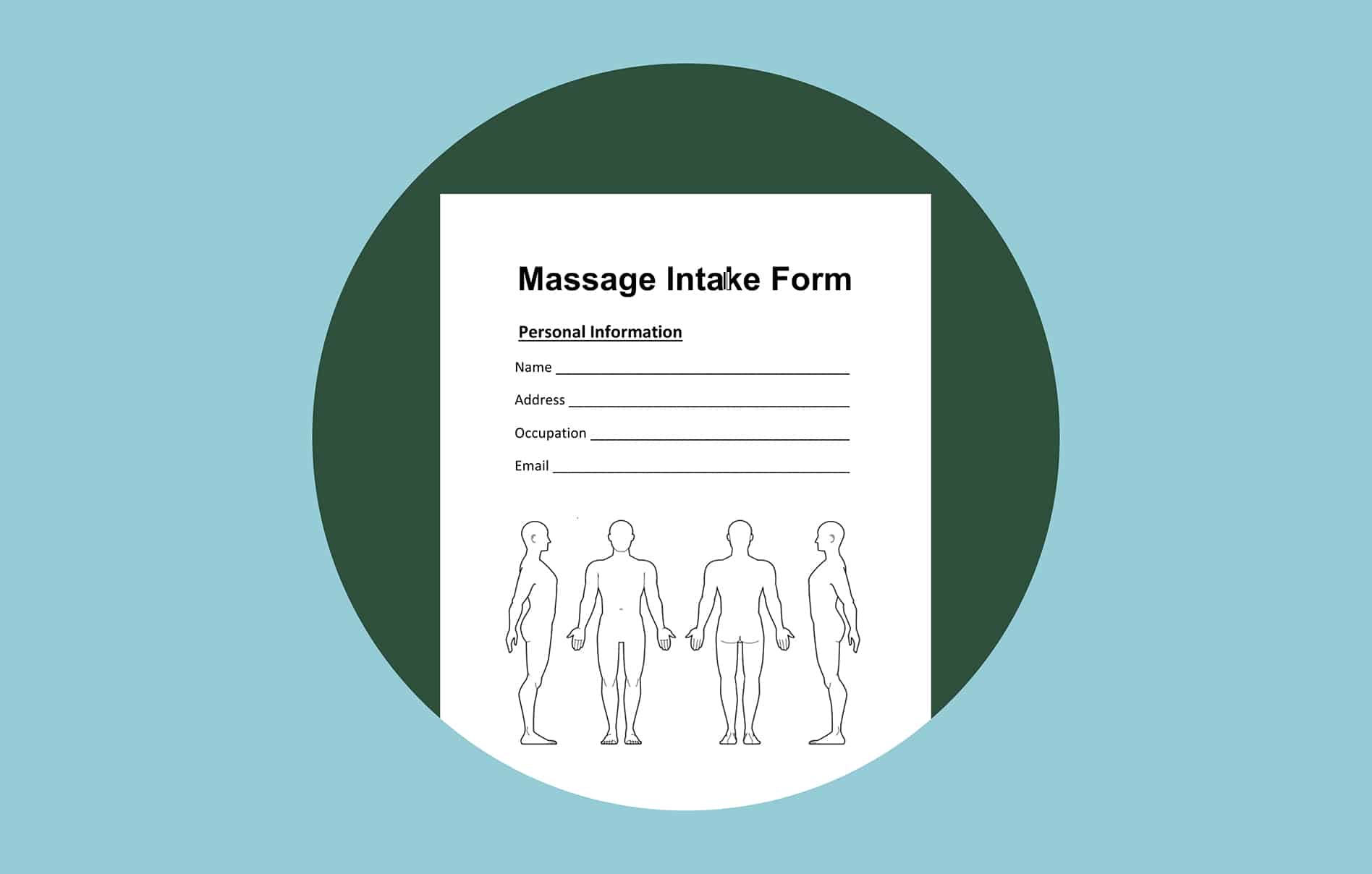The secret to a smooth massage client/therapist relationship? Client intake forms.
It might sound too simple to be true, but as the first point of contact between a therapist and their client, massage intake forms are a good way for therapists to learn about their clients and plan out treatment strategies.
Since each client’s needs are different, the more information you can gather before their appointment, the better you can help them.
To make sure you get all the valuable info you can from your clients, we’ll share massage intake form must-haves and give you the templates you need to build your own.
But first, let’s start by answering a few questions…
- What is a massage therapy intake form?
- Is a client intake form required by law?
- Do you need intake forms at a massage chair event?
- What do I include in my massage intake form?
- Free massage intake form templates!
What Is a Massage Therapy Intake Form?
Let’s start with the basics: What is a massage therapy intake form, and why do you need one?
Massage intake forms are there to provide therapists with valuable information about the client, such as health history, allergies, prior injuries, and client goals. So you, as the therapist, learn as much as you can about your client before you begin a treatment strategy.
They’re also an opportunity for therapists to share important information with clients, like therapy practices, legal rules, boundaries, etc.
Plus, intake forms collect contact information on clients, too!
Is a Massage Client Intake Form Required by Law?
As each state’s requirements are different, it’s best to consult your local licensing requirements to learn more about what’s required in your area.
However, massage intake forms are there to protect yourself, your clients, and your business. So it’s smart to collect them up front before working with a client.
Do You Need Intake Forms at a Massage Chair Event?
As a licensed massage therapist, it’s still wise to collect information from clients, even if it’s a massage chair event instead of a spa.
You’ll still need to know about any prior injuries or allergies, for example, before treating clients.
And, hey, why not use it as a time to collect contact information from clients for later marketing efforts?
Email marketing is a powerful tool, and the more new clients you can connect with, the more chances you have to be re-booked for the future!

Getting the Word Out:
A Beginner’s Guide to Email Marketing and Automated Text Messages
Get the GuideWhat Do I Include In My Massage Intake Form?
The trick to a great intake form is… being comprehensive, while not being a long and painstaking process for clients to complete.
That means you want to gather enough information from your client to give a clear idea of their history and treatment goals, while not taking up too much of their time.
While we have a couple handy templates below for you to work from, there are a few basic pieces of information that every massage intake form needs.
- Contact Information: This one’s a must-have, so be sure to have space to collect your client’s name, email, phone number, and emergency contact info. You can also include space here for gender identity or if they prefer a male or female therapist.
- Prior Treatment: This is your chance to learn how familiar your client is with massage therapy. You can learn how long ago they had their last massage, the type of massage they received, and what they enjoyed about prior massages. Then, you can gauge the type of massage they may want from you.
- Medical Information: Learning about a client’s medical history is vital to a successful massage experience. Think allergies, prior injuries, congestion, sneezing related to certain products. Then use that information to tailor their visit just for them!
- Painful Areas: Be sure to have a place on your form for clients to point out any painful areas they may have, such as their neck or certain points on their back. Keeping your client’s comfort at top of mind is crucial to a successful, enjoyable massage.
Free Massage Intake Form Templates
Keep in mind: These are only templates. Each massage therapist will need to check their local and state regulations to make sure their intake form meets the most up-to-date requirements.









